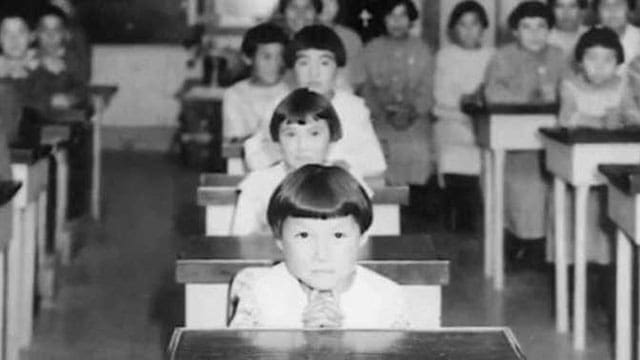Trudeau government cuts expose flaws in Indigenous funding and accountability
 On July 18, the federal government informed organizations and community leaders searching for the remains of Indigenous children who never returned from residential schools that their funding would be capped at $500,000, down from the $3 million per year they had been eligible for since 2021.
On July 18, the federal government informed organizations and community leaders searching for the remains of Indigenous children who never returned from residential schools that their funding would be capped at $500,000, down from the $3 million per year they had been eligible for since 2021.
This funding was originally introduced as part of a $321 million response to the Kamloops Indian Band’s May 27, 2021, claim that the remains of 215 children, former students of the Kamloops Indian Residential School, had been found buried near the long-shuttered institution.
However, no actual confirmation of remains has been made at Kamloops or elsewhere, as only excavations of the suspected burial sites can provide definitive proof. Few excavations have been conducted so far, likely because the results have often been inconclusive or problematic.
Despite the absence of concrete proof, the Trudeau government had, by March 31, 2024, provided 146 funding agreements totalling $216.5 million to Indigenous communities and organizations. These funds were intended to support “community-led and Survivor-centric initiatives to document, locate, and commemorate the children who did not return home and unmarked burial sites associated with former residential schools.”
Despite the lack of concrete proof, the Trudeau government provided 146 funding agreements totalling $216.5 million to Indigenous communities and organizations by March 31, 2024. These funds were meant to support “community-led and Survivor-centric initiatives to document, locate, and commemorate the children who did not return home and unmarked burial sites associated with former residential schools.”
Unfortunately, none of these agreements actually required excavation to confirm the presence of any remains.
In response to the funding cuts, Kimberly Murray, the Independent Special Interlocutor for Missing Children and Unmarked Graves, argued, “We should be investing additional funding into the supports for communities, not removing them,” referring to the ongoing search for unidentified missing children, even though no family members are actively searching for them.
Her comment seems particularly odd, as, on March 21, 2023, she testified before the federal government’s Standing Senate Committee on Indigenous Peoples, stating, “The children aren’t missing; they’re buried in the cemeteries. They’re missing because the families were never told where they’re buried.”
While it’s true that some children never returned home because they were taken to hospitals or sanatoriums and buried elsewhere, this doesn’t necessarily mean that their families were not informed or that their deaths and burial locations were inaccurately recorded.
Murray also stated, “We have to follow the truth where it takes us, and Canada is putting up barriers and roadblocks to following the truth and revealing the truth.”
However, she overlooks the fact that some of the real “barriers and roadblocks” have been created by Indigenous leaders who have refused to excavate the soil anomalies revealed by ground-penetrating radar (GPR) searches or to search provincial archives, where the fates of children who died while registered as Indian Residential School students could be quickly uncovered.
It’s hard to determine what this funding controversy truly reveals, aside from the strong influence of Indigenous lobbying and the Trudeau government’s guilt over its failure to improve the situation of ordinary Indigenous people since taking power in 2015.
Nevertheless, it’s clear that the funding cut is not a sign that the Trudeau government is finally recognizing that continuing to fund what even the left-wing Toronto Star has called the “Indian industry” – a network of Indigenous politicians, activists, consultants, lawyers, and accountants who draw hundreds of millions from Indian Reserves and federal funds – is a fool’s errand that only earns it contempt from all sides.
Hymie Rubenstein is a retired professor of anthropology, University of Manitoba, senior fellow with the Frontier Centre for Public Policy, and editor of REAL Indigenous Report. He is co-author of the Frontier Centre’s Residential School Recrimination, Repentance, and Reality.
For interview requests, click here.
The opinions expressed by our columnists and contributors are theirs alone and do not inherently or expressly reflect the views of our publication.
© Troy Media
Troy Media is an editorial content provider to media outlets and its own hosted community news outlets across Canada.


